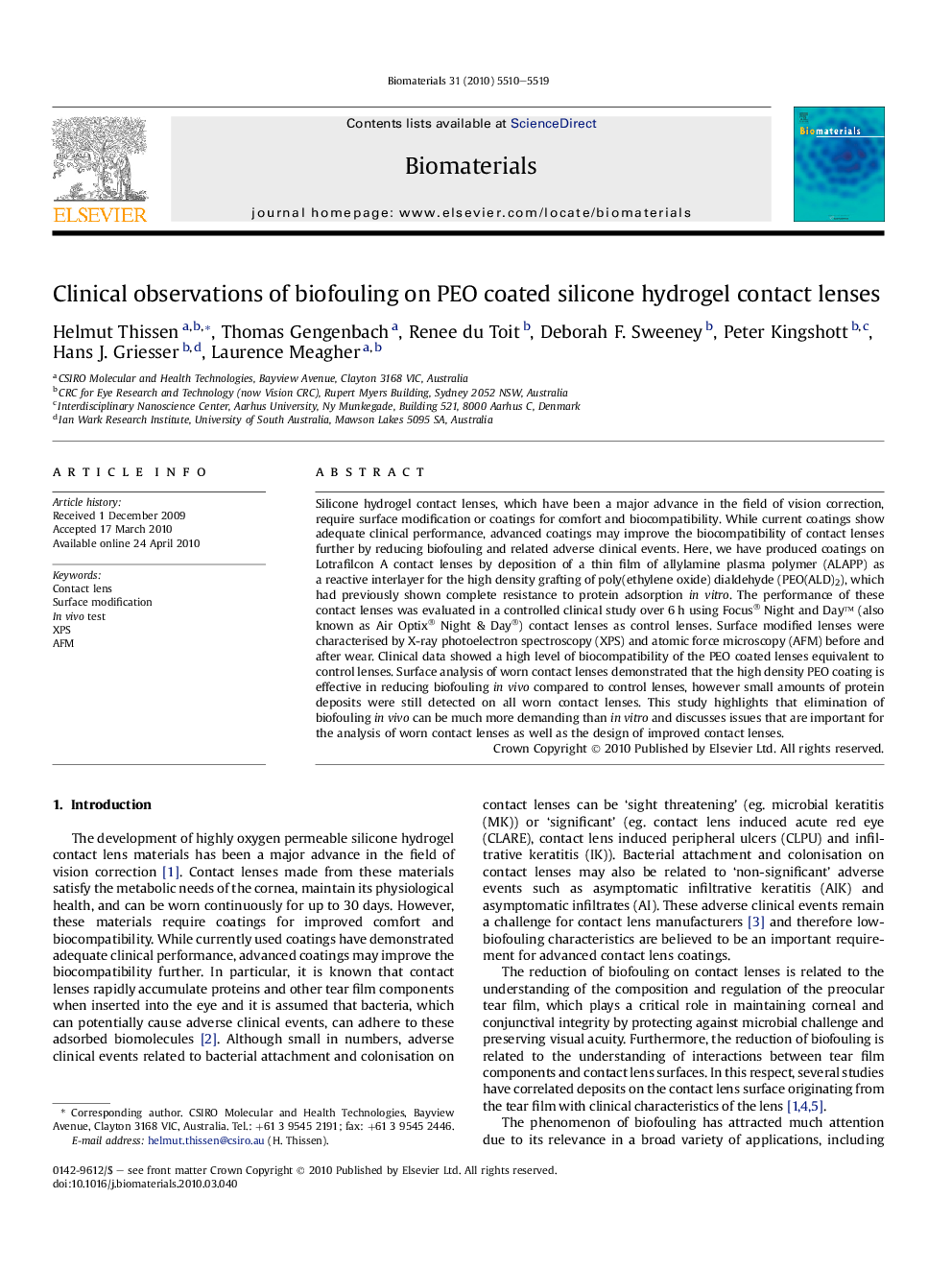| Article ID | Journal | Published Year | Pages | File Type |
|---|---|---|---|---|
| 9496 | Biomaterials | 2010 | 10 Pages |
Silicone hydrogel contact lenses, which have been a major advance in the field of vision correction, require surface modification or coatings for comfort and biocompatibility. While current coatings show adequate clinical performance, advanced coatings may improve the biocompatibility of contact lenses further by reducing biofouling and related adverse clinical events. Here, we have produced coatings on Lotrafilcon A contact lenses by deposition of a thin film of allylamine plasma polymer (ALAPP) as a reactive interlayer for the high density grafting of poly(ethylene oxide) dialdehyde (PEO(ALD)2), which had previously shown complete resistance to protein adsorption in vitro. The performance of these contact lenses was evaluated in a controlled clinical study over 6 h using Focus® Night and Day™ (also known as Air Optix® Night & Day®) contact lenses as control lenses. Surface modified lenses were characterised by X-ray photoelectron spectroscopy (XPS) and atomic force microscopy (AFM) before and after wear. Clinical data showed a high level of biocompatibility of the PEO coated lenses equivalent to control lenses. Surface analysis of worn contact lenses demonstrated that the high density PEO coating is effective in reducing biofouling in vivo compared to control lenses, however small amounts of protein deposits were still detected on all worn contact lenses. This study highlights that elimination of biofouling in vivo can be much more demanding than in vitro and discusses issues that are important for the analysis of worn contact lenses as well as the design of improved contact lenses.
